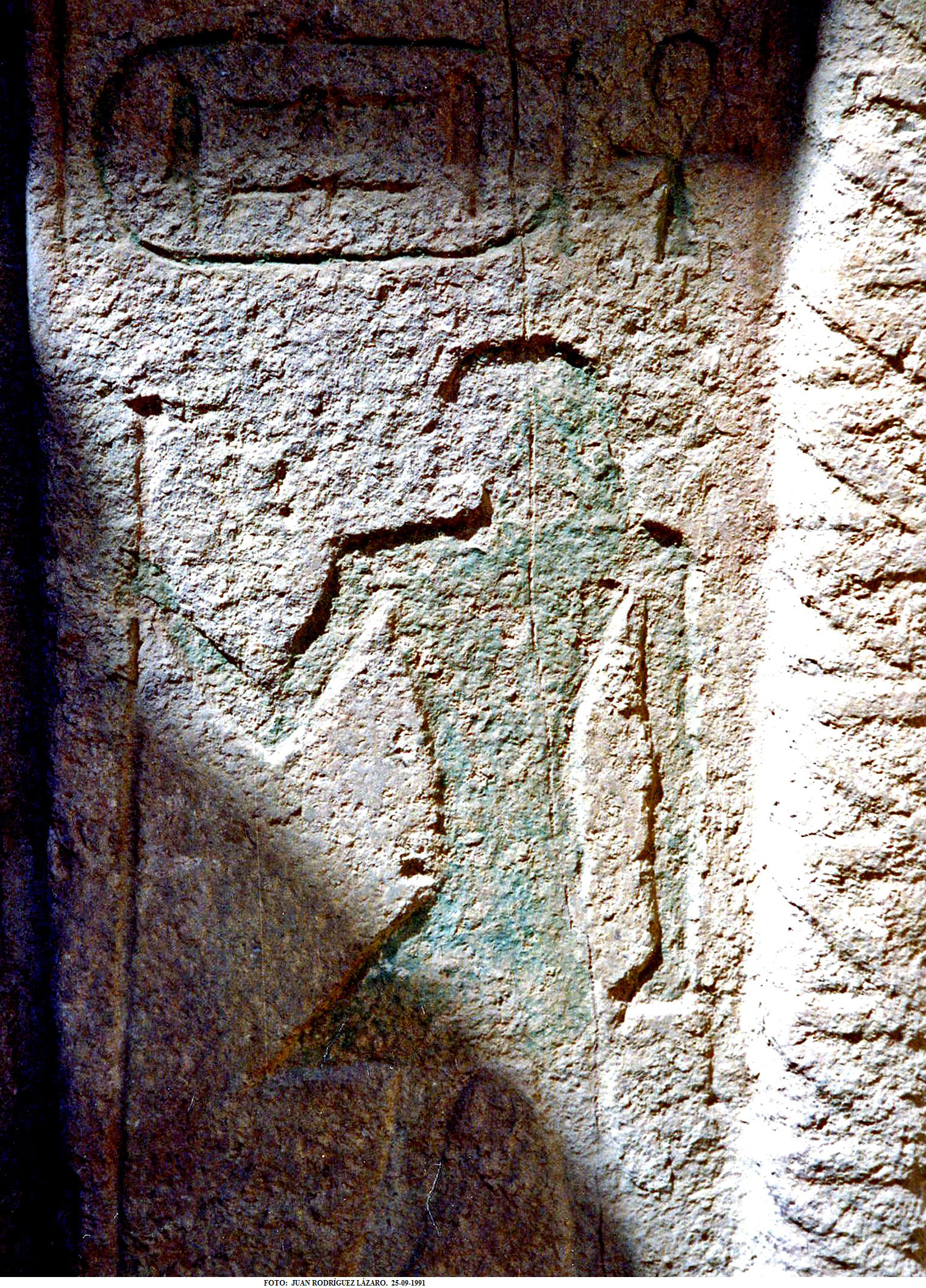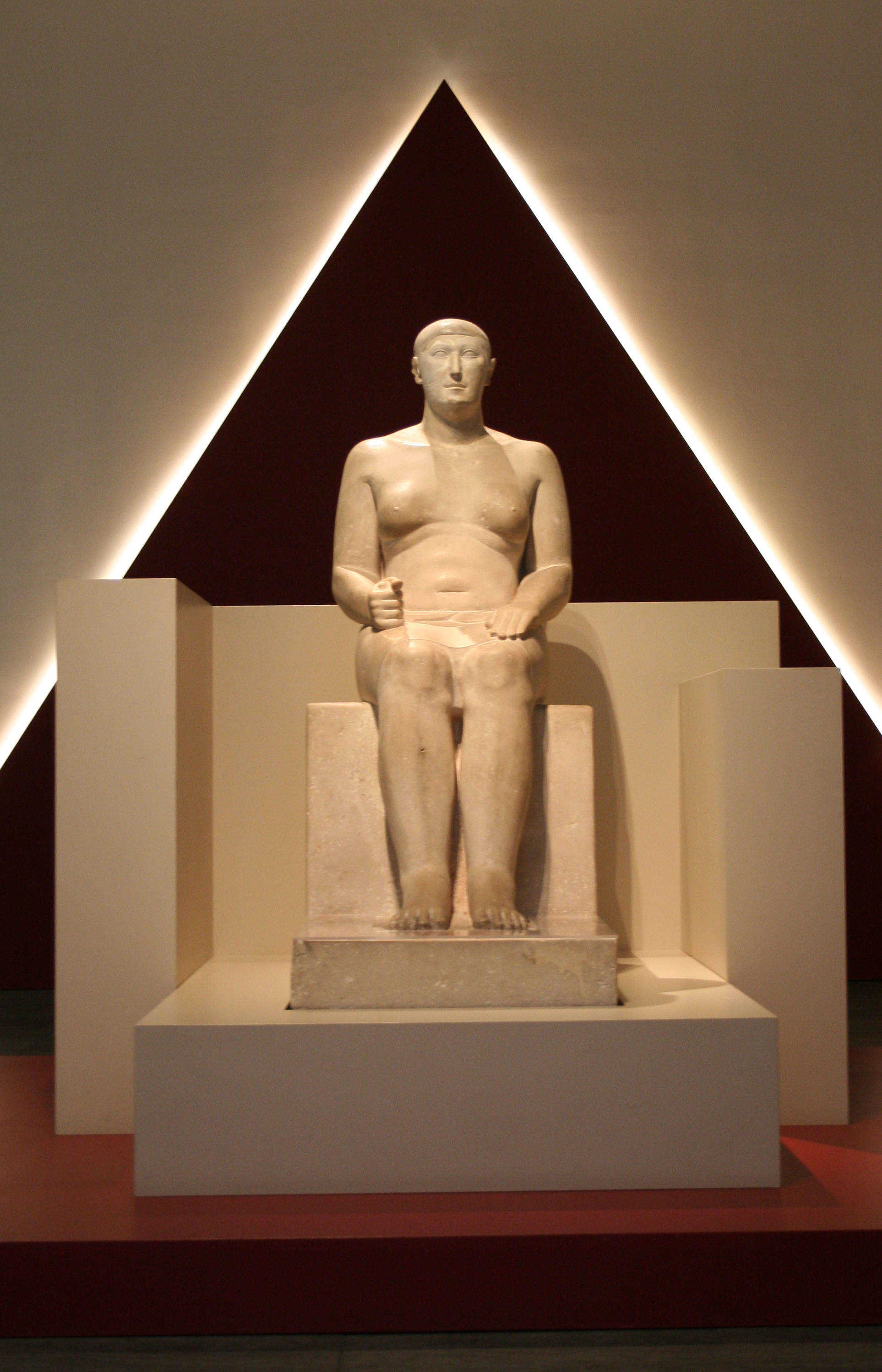|
Ptahhotep Tjefi
Ptahhotep Tjefi, also called Ptahhotep II was an ancient Egyptian official who lived at the end of the Fifth Dynasty, most likely under king Djedkare Isesi and under king Unas. His main function at the royal court was that of the vizier, making him to the most important man at the court, only second to the king. Ptahhotep, whose second name was Tjefi, came from an influential family. His father was the vizier Akhethetep. His grandfather was the vizier Ptahhotep (I). Ptahhotep is mainly known from his mastaba at Saqqara Saqqara ( ar, سقارة, ), also spelled Sakkara or Saccara in English , is an Egyptian village in Giza Governorate, that contains ancient burial grounds of Egyptian royalty, serving as the necropolis for the ancient Egyptian capital, Memphis .... The burial complex was built for him and his father Akhethetep. References Literature * * {{DEFAULTSORT:Ptahhotep Tjefi Viziers of the Fifth Dynasty of Egypt ... [...More Info...] [...Related Items...] OR: [Wikipedia] [Google] [Baidu] |
Djedkare Isesi
Djedkare Isesi (known in Greek as Tancheres) was a pharaoh, the eighth and penultimate ruler of the Fifth Dynasty of Egypt in the late 25th century to mid- 24th century BC, during the Old Kingdom. Djedkare succeeded Menkauhor Kaiu and was in turn succeeded by Unas. His relationship to both of these pharaohs remain uncertain, although it is often conjectured that Unas was Djedkare's son, owing to the smooth transition between the two. Djedkare likely enjoyed a reign of more than 40 years, which heralded a new period in the history of the Old Kingdom. Breaking with a tradition followed by his predecessors since the time of Userkaf, Djedkare did not build a temple to the sun god Ra, possibly reflecting the rise of Osiris in the Egyptian pantheon. More significantly, Djedkare effected comprehensive reforms of the Egyptian state administration, the first undertaken since the inception of the system of ranking titles. He also reorganised the funerary cults of his forebears buried in ... [...More Info...] [...Related Items...] OR: [Wikipedia] [Google] [Baidu] |
Unas
Unas or Wenis, also spelled Unis ( egy, wnjs, hellenized form Oenas or Onnos), was a pharaoh, the ninth and last ruler of the Fifth Dynasty of Egypt during the Old Kingdom. Unas reigned for 15 to 30 years in the mid-24th century BC (circa 2345–2315 BC), succeeding Djedkare Isesi, who might have been his father. Little is known of Unas' activities during his reign, which was a time of economic decline. Egypt maintained trade relations with the Levantine coast and Nubia, and military action may have taken place in southern Canaan. The growth and decentralization of the administration in conjunction with the lessening of the king's power continued under Unas, ultimately contributing to the collapse of the Old Kingdom some 200 years later. Unas built a pyramid in Saqqara, the smallest of the royal pyramids completed during the Old Kingdom. The accompanying mortuary complex with its high and valley temples linked by a causeway was lavishly decorated with painted reliefs, whose ... [...More Info...] [...Related Items...] OR: [Wikipedia] [Google] [Baidu] |
Vizier (Ancient Egypt)
The vizier () was the highest official in ancient Egypt to serve the pharaoh (king) during the Old, Middle, and New Kingdoms. Vizier is the generally accepted rendering of ancient Egyptian , etc., among Egyptologists. The ''Instruction of Rekhmire'' (''Installation of the Vizier''), a New Kingdom text, defines many of the duties of the , and lays down codes of behavior. The viziers were often appointed by the pharaoh. During the 4th Dynasty and early 5th Dynasty, viziers were exclusively drawn from the royal family; from the period around the reign of Neferirkare Kakai onwards, they were chosen according to loyalty and talent or inherited the position from their fathers. Responsibilities The viziers were appointed by the pharaohs and often belonged to a pharaoh's family. The vizier's paramount duty was to supervise the running of the country, much like a prime minister. At times this included small details such as sampling the city's water supply. All other lesser supervis ... [...More Info...] [...Related Items...] OR: [Wikipedia] [Google] [Baidu] |
Akhethetep (son Of Ptahhotep)
Akhethetep (also Akhethotep or Akhty-hotep) was a high dignitary of ancient Egypt who lived during the Fifth Dynasty around 2400 BC. Akhethotep and his son Ptahhotep Tjefi were senior court officials during the rule of Djedkare (2414–2375 BC) and of Unas (Wenis), towards the end of the 5th Dynasty (2494–2345 BC). Akhethetep's titles included that of a vizier, making him to the highest official at the royal court, only second to the king. He was also ''overseer of the treasuries'', ''overseer of the scribes of the king's documents'' and ''overseer of the granaries''. Akhethetep was the son of Ptahhotep. His father was vizier too. He is famous for his tomb, discovered in Saqqara. The plan was recorded by Mariette and it was published by N. de Garis Davies The Egyptologists Nina M. Davies (6 January 1881 – 21 April 1965) and Norman de Garis Davies (1865–5 November 1941) were a married couple of illustrators and copyists who worked in the early and mid-twentieth c ... [...More Info...] [...Related Items...] OR: [Wikipedia] [Google] [Baidu] |
Ptahhotep
Ptahhotep ( egy, ptḥ ḥtp "Peace of Ptah"), sometimes known as Ptahhotep I or Ptahhotpe, was an ancient Egyptian vizier during the late 25th century BC and early 24th century BC Fifth Dynasty of Egypt. Life Ptahhotep was the city administrator and vizier (first minister) during the reign of Pharaoh Djedkare Isesi in the Fifth Dynasty. He is credited with authoring ''The Maxims of Ptahhotep'', an early piece of Egyptian "wisdom literature" meant to instruct young men in appropriate behavior. He had a son named Akhethetep, who was also a vizier. He and his descendants were buried at Saqqara. Ptahhotep's tomb is located in a mastaba in North Saqqara (Mastaba D62). His grandson Ptahhotep Tjefi, who lived during the reign of Unas, was buried in the mastaba of his father (Mastaba 64). Their tomb is famous for its outstanding depictions. Next to the vizier's titles he held many other important positions, such as ''overseer of the treasury'', ''overseer of scribes of the king's ... [...More Info...] [...Related Items...] OR: [Wikipedia] [Google] [Baidu] |
Saqqara
Saqqara ( ar, سقارة, ), also spelled Sakkara or Saccara in English , is an Egyptian village in Giza Governorate, that contains ancient burial grounds of Egyptian royalty, serving as the necropolis for the ancient Egyptian capital, Memphis. Saqqara contains numerous pyramids, including the Step pyramid of Djoser, sometimes referred to as the Step Tomb, and a number of mastaba tombs. Located some south of modern-day Cairo, Saqqara covers an area of around . Saqqara contains the oldest complete stone building complex known in history, the Pyramid of Djoser, built during the Third Dynasty. Another sixteen Egyptian kings built pyramids at Saqqara, which are now in various states of preservation. High officials added private funeral monuments to this necropolis during the entire Pharaonic period. It remained an important complex for non-royal burials and cult ceremonies for more than 3,000 years, well into Ptolemaic and Roman times. North of the area known as Saqqara lie ... [...More Info...] [...Related Items...] OR: [Wikipedia] [Google] [Baidu] |

_032007_27_det.jpg)

